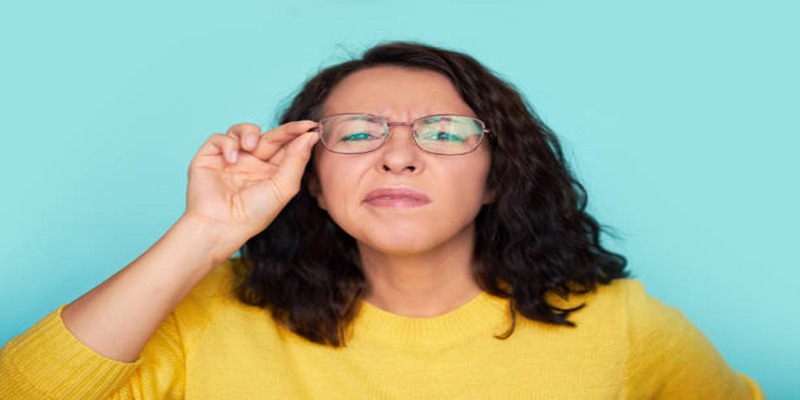Low Vision: Essential Insights and Support Strategies
Low vision is a condition where a person finds it difficult to see clearly, even with the help of regular glasses or contact lenses. It can make everyday tasks like reading, driving, or recognizing faces challenging. Low vision is different from complete blindness, and people with this condition often use various tools and strategies to help them manage their daily lives. These tools can include magnifying glasses, special lighting, or electronic devices that make text and images bigger or clearer. Understanding low vision is important as it affects millions of people globally. By learning about it and the support available, we can create a more inclusive environment where those with low vision can live more comfortably and independently. This guide offers essential insights and strategies for supporting individuals with low vision.
What is Low Vision?

Low vision is a visual impairment that cannot be corrected by regular eyeglasses, contact lenses, or medical treatments. It can occur due to various eye conditions such as age-related macular degeneration, glaucoma, cataracts, or diabetic retinopathy. Unlike complete blindness, individuals with low vision still have some degree of functional vision but struggle with everyday tasks that require clear and detailed sight.
Types and levels of visual impairment
There are different types and levels of low vision, depending on the severity of the condition and its impact on daily activities. Some common types include:
- Central vision loss: This type affects the central part of the visual field, making it difficult to see objects in front clearly.
- Peripheral vision loss: It causes a decrease in side or peripheral vision, making it challenging to navigate around obstacles.
- Night blindness: Individuals with this type have difficulty seeing in dim or low-light conditions.
- Blurred vision: This type can make objects appear blurry and out of focus.
The level of impairment can also vary from mild to severe, with some individuals still able to perform certain tasks independently while others may need more assistance.
Symptoms and early signs to watch out for
Identifying low vision in its early stages is crucial for seeking appropriate treatment and support. Some common symptoms to look out for include:
- Difficulty reading small print or seeing objects up close.
- Blurry or distorted vision.
- Trouble recognizing faces or distinguishing colors.
- Frequent headaches or eye strain when attempting to focus on objects.
If you experience any of these symptoms, it is essential to consult an eye doctor for a comprehensive eye exam to determine the cause and extent of your visual impairment.
Diagnosis and Assessment
A diagnosis of low vision involves a series of tests and evaluations to determine the type and severity of the condition. These may include visual acuity tests, contrast sensitivity tests, and a review of medical history and symptoms. An eye doctor may also assess an individual's functional vision by observing their ability to perform various tasks such as reading, writing, or navigating around obstacles.
Impact of Low Vision
Living with low vision can have a significant impact on an individual's daily life, including their physical, emotional, and social well-being. It can lead to difficulties in performing everyday tasks such as cooking, cleaning, or shopping independently. Low vision can also affect a person's ability to work or participate in hobbies and activities they once enjoyed.
Potential challenges
Some common challenges faced by individuals with low vision include:
- Dependence on others for assistance with daily tasks.
- Limitations in job opportunities and career advancement.
- Social isolation and decreased participation in social activities.
- Increased risk of accidents or falls due to difficulty seeing obstacles or hazards.
Coping strategies and support techniques
Despite the challenges, individuals with low vision can lead fulfilling lives by learning and implementing coping strategies and utilizing support techniques. Some effective strategies include:
- Maximizing remaining vision: This involves making the most of the existing functional vision through various visual aids such as magnifiers, telescopic lenses, or electronic devices.
- Environmental modifications: Making changes to an individual's environment can make everyday tasks more manageable. These modifications can include increasing lighting, using contrasting colors for better visibility, or organizing items in a specific way for easier access.
- Utilizing assistive technology: With advancements in technology, there are numerous options available to help individuals with low vision perform daily tasks more efficiently. These may include screen readers, speech-to-text software, or text-to-speech devices.
- Emotional support: Coping with low vision can be emotionally challenging. Seeking support from friends, family, or joining support groups can help individuals feel less isolated and more empowered to manage their condition.
Community and Peer Support

Communities and peer support groups play a crucial role in helping individuals with low vision feel connected, supported, and empowered. There are numerous organizations and resources available that provide valuable information, guidance, and advocacy for those living with low vision.
Examples of community resources
- National Eye Institute (NEI): A division of the National Institutes of Health (NIH) dedicated to supporting research, education, and public awareness about eye diseases.
- American Foundation for the Blind: Provides resources and services for people with vision loss to help them live independently and fully participate in their communities.
- Local support groups: These may include local chapters of national organizations or independent support groups that offer regular meetings, educational resources, and a sense of community for individuals with low vision.
Conclusion
Living with low vision can present various challenges, but with the right support and strategies, individuals can continue to lead fulfilling lives. It is essential to seek early diagnosis and appropriate treatment to manage the condition effectively. By utilizing available resources and support systems, individuals can maintain their independence and actively participate in their communities. So don't hesitate to reach out for help if you or someone you know may be experiencing symptoms of low vision. Remember, there's always hope for better vision and a better quality of life.












